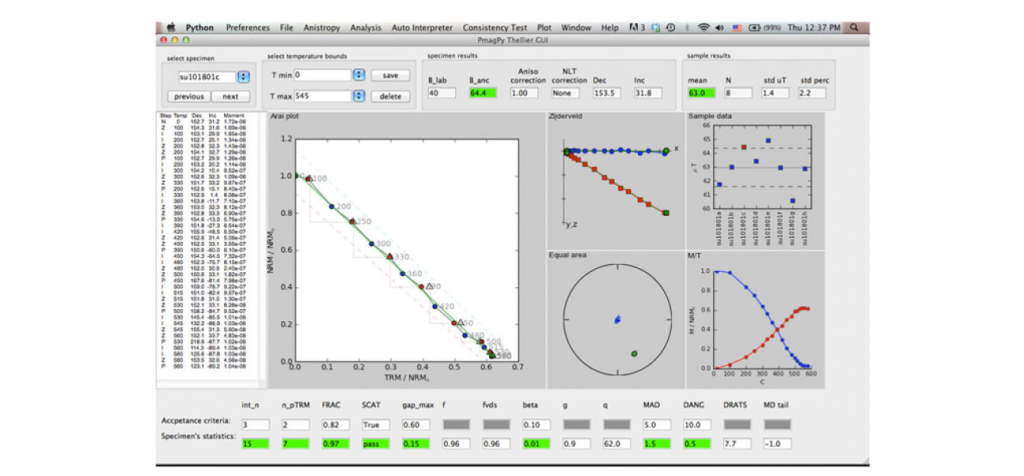At the latest magnetic personalities meeting we looked at a paper by Ron Shaar and Lisa Tauxe named ‘Thellier GUI: An integrated tool for analysing palaeointensity data from Thellier type experiments’ published in Geochemistry, Geophysics, Geosystems. I chose this paper as it has direct relevance to the laboratory at Liverpool where we carry out much palaeointensity research.
As with many disciplines in science there is debate over the best methods of analysing data. Ideally there would be a format giving rise to objective results that could be reproducible and correlated between laboratories. Unfortunately this is not the case in the world of palaeointensity study. A plethora of Thellier style palaeointensity methods and analysis make it difficult to correlate across studies. The main issues highlighted by the authors are the subjective nature of manual palaeointensity analyses, that it is very time consuming and that unless the raw data is published the results are not reproducible.
The paper uses two case studies, one from an Iron Age copper slag and another of submarine basaltic glass from a DSDP/ODP cores spanning 160Ma to illustrate how manual interpretation leads to different conclusions dependent on which criteria are selected.
The Thellier GUI integrated tool for palaeointensity analysis is designed to isolate the criteria of most importance during analyses at the specimen and sample stages. It incorporates two new tools, the ‘Auto Interpreter’ and the ‘Thellier Consistency Test’. New statistics include FRAC, a fraction statistic and a new scatter statistic amalgamating all scatter including pTRM and tail checks called SCAT, and finally GAP-MAX an upper limit for the gap between data points in an Arai plot. Sample level palaeointensity values are then calculated using an optimised standard deviation statistic and simple and parametric bootstrap methods.
We unanimously agree there should be more uniformity in this field and hopefully this tool will go some way towards this. Uniformity of methods and analysis would greatly benefit our models of magnetic field behaviour where correlation of worldwide studies is paramount. We look forward to applying this approach to our own data sets. Work is also underway to integrate the Liverpool Palaeomagnetic Database with the MagIC database to encourage the standardisation of data format and consistency of analyses.
Shaar, R, & Tauxe, L. (2013), ‘Thellier GUI: An integrated tool for analyzing paleointensity data from Thellier-type experiments’, Geochemistry Geophysics Geosystems, 14, 3, pp. 677-692


Leave a Reply